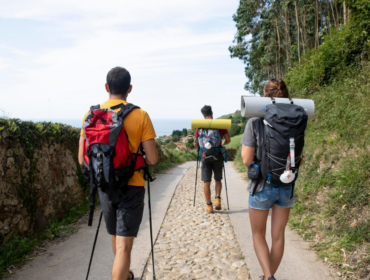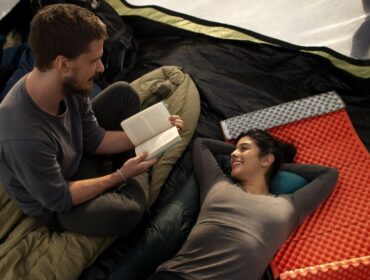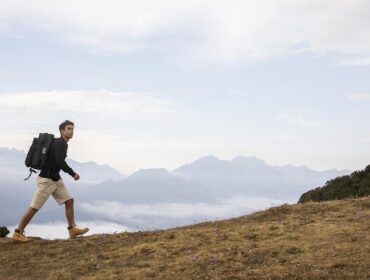Camping is an experience that lets you escape the everyday hustle and immerse yourself in the natural world. It offers an opportunity to relax, explore, and build memories that last a lifetime. However, to fully enjoy the beauty of camping, preparation is crucial. In this comprehensive guide on camping essentials, we will delve into everything you need to know to make your outdoor adventure successful and enjoyable.
Introduction
Camping in the United States is becoming more popular, especially among millennials looking for affordable outdoor adventures. In fact, Statista projects that the U.S. camping market will reach $25.81 billion in revenue by 2024.
Having the right camping gear is essential for a safe and enjoyable experience in the outdoors. The right equipment and knowledge can be the difference between a great trip and a difficult one. While many campers are knowledgeable about the gear they need and often recommend trusted brands, it’s important to know how to choose the best equipment for yourself.
5 Camping Essentials and Tips on Choosing the Best
Here are five of the most popular camping essentials every outdoor travel enthusiast can rely on with ease.
1. Shelter Essentials: Tents and Sleeping Bags
A tent is one of the most important items in your camping gear. Choosing the right one depends on factors like weather, the number of campers, and how long you plan to stay. It’s essential to pick a tent that’s spacious, well-ventilated, and easy to set up. For experienced campers, lightweight four-season tents are perfect for handling various weather conditions.
- Season Rating: A three-season tent works well for spring, summer, and fall, while a four-season tent is better for winter conditions
- Capacity: Match the tent size to your group. A two-person tent is great for solo camping with extra room, while a four-person tent is ideal for small families
- Storage: Look for tents with vestibules, which provide extra space outside the sleeping area for gear, helping keep the inside organized and clutter-free
It’s always a good idea to practice setting up your tent at home before your trip to avoid any difficulties in the wilderness.
Next, choose a sleeping bag based on the lowest temperature you’re likely to encounter. Down sleeping bags are lightweight and warm but better for dry environments. On the other hand, synthetic sleeping bags are more affordable, retain heat even when damp, and are ideal for wet conditions.

Finally, don’t forget to bring a ground tarp, also known as a footprint, which protects your tent from rough surfaces and extends its lifespan. A lightweight tarp can also serve as extra shelter for cooking or relaxing during wet weather.
2. Cooking Essentials: Stoves and Storage Boxes
Cooking in the wilderness requires the right gear. A camping stove is a must-have since open fires are often restricted. Choose a stove that uses easily available fuel like propane or butane, and opt for a portable model for easier packing.

Here are the main types of camping stoves:
- Single-Burner Stoves: Perfect for solo or small group trips, these stoves are lightweight and simple to use
- Multi-Burner Stoves: Ideal for larger groups or car camping, allowing you to cook multiple dishes at once
- Fuel Types: Propane and butane are common fuel options. Be sure to bring enough fuel for the length of your trip
When it comes to cookware, choose lightweight, durable materials like titanium or aluminium. Nesting pots and pans are great for saving space. Don’t forget utensils, a cutting board, and a sponge for cleaning up. Reusable food containers can help with meal organization and reducing waste.
- Dehydrated Meals: These are lightweight, easy to prepare, and packed with calories – just add boiling water
- Snacks: High-energy options like nuts, trail mix, and protein bars keep you fueled during hikes
- Cooking Spices and Oils: Small containers of spices and oils can make a big difference in adding flavor to your meals
Plan meals that are easy to cook and require minimal cleanup. Pack enough food for every meal, along with some extra snacks to stay energized. Don’t forget a bear-proof container to safely store any food or scented items.
3. Hydration Essentials: Filters and Bottles
When camping, having access to clean water is not just important – it is essential for staying hydrated and healthy. Here’s a breakdown of some top options and tips for ensuring clean water on your trip

- Gravity Filters: These are ideal for larger groups because they can filter a lot of water at once with minimal effort. You simply fill a reservoir bag, hang it from a tree or other elevated spot, and let gravity do the rest. They’re great when you need to provide water for multiple people, like for cooking or filling multiple bottles.
- UV Purifiers: Lightweight and effective, these devices use ultraviolet light to kill bacteria, viruses, and protozoa in water. They’re perfect for solo hikers or small groups and are easy to pack, but they do require batteries. Make sure to bring extra batteries just in case.
- Pump Filters: These are versatile and work quickly, making them a popular choice for filtering water from streams or lakes. Pump filters are more manual but effective for solo or small-group campers, especially if water sources are shallow.
Beyond filtration systems, it is smart to have a backup plan. Purification tablets are a lightweight and compact backup option that can purify water in about 30 minutes. They don’t take up much space and are a reliable fail-safe if your filter breaks or malfunctions.
For carrying water, hydration packs are super convenient. They allow you to drink on the go without having to stop and reach for a bottle. Insulated water bottles are another great option to keep water cold, especially during hot days or long hikes.
4. Clothes and Footwear Essentials: Boots, Jackets, and more

Picking the right clothes for camping is super important. Good clothes keep you comfy and safe outdoors. You’ll need tough boots for walking on rough ground, jackets to keep rain and wind off, and special shirts that help you stay dry.
However, the layering system is the key to staying comfortable in varying weather conditions. A good set of camping essentials includes:
- Base Layer: This layer is meant to wick moisture away from your body. Opt for merino wool or synthetic fabrics
- Middle Layer: Insulation is crucial for warmth. Fleece or synthetic insulated jackets work well
- Outer Layer: Protect yourself from the elements with a waterproof, breathable jacket
Layering allows you to adjust your clothing based on changing weather conditions, ensuring comfort throughout your camping trip. Avoid cotton clothing, as it retains moisture and takes a long time to dry.
Furthermore, footwear is one of the most critical camping essentials. Comfortable, waterproof hiking boots are ideal for traversing different terrains. Make sure your boots have good ankle support and traction. Gaiters can also help keep dirt, rocks, and water out of your boots.
- Hiking Boots: Look for boots with good ankle support, waterproof membranes, and durable soles for traction
- Trail runners are a good alternative to boots for lightweight backpacking. They are breathable and comfortable for long distances
- Gaiters are useful for keeping debris, water, and snow out of boots, especially in wet or snowy conditions
Remember to bring extra socks, a warm hat, and gloves for cold nights. The right clothes can make your camping trip much more fun.
5. Safety Essentials: Maps and Compass
When you’re heading out for a camping trip, especially in remote areas, having the right navigational tools is crucial. Knowing how to get around in the wilderness can make or break your adventure. Here’s a simple breakdown of what you need:

- Topographic Maps and Compass: These are the basics for navigation. A topographic map shows the landscape, including hills, valleys, and water sources, while a compass helps you orient yourself. Learning how to read a map and use a compass is a valuable skill that every camper should know. These tools never run out of batteries, so they’re always reliable.
- GPS Devices and Smartphone Apps: While maps and a compass are essential, many campers also use handheld GPS devices or smartphone apps with offline maps for extra security. They make navigation easier, but you should always carry a backup like a map and compass in case your device dies or loses signal. Before you start your trip, mark important waypoints like your campsite, water sources, and trailheads to help you stay on track.
In addition to navigation, safety gear is just as important. A well-stocked first aid kit should be a permanent part of your camping essentials. Make sure it includes basics like adhesive bandages, antiseptic wipes, gauze, tweezers, and blister treatment. For more serious situations, consider adding a SAM splint for fractures, antihistamines for allergic reactions, and a tourniquet for serious injuries.
Conclusion
Camping is the perfect mix of adventure and preparation. With the right essentials, you can stay safe and have fun at the same time. From picking the right tent and gear to planning meals and navigating the wilderness, every detail adds to the experience. Tailor your gear to the destination, weather, and activities ahead. The better you prepare, the more memorable your adventure will be!





